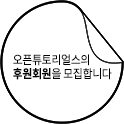Lesson4 비격식체 casual style ~해, ~해요 style.
해 style, 해요 style are both casual style. especially 해요 style is both honorific and casual. So you can usually use it to your superior or friend, and colleagues, even in business. Because It is common more and more in korean, I recommend you to start from 해요 style.
But Because 해요 style is still honorific, maybe your close friend or colleague or lover can feel a sense of distance between you and she or he. That's why there is still 해style, 반말. If some people is equal with you but allow you to use 반말, they feel that you are close to them. They may also start to use 반말 to you.
해요 style example. (Commonly used)
- 안녕하세요. Hello.
- 감사해요. Thanks.
- 잘 있어요. Goodbye.
- 다시 만나요. See you again.
아직도 보고서를 못 끝냈어요? Have you finished your report yet? (from colleagues of a company)
- 못 ~ = literaly can't do
- ~했습니까? = ~했어요? = did you~? have you~?
"사랑해요. 저랑 사귀어줄래요?" I love you. Would you be my lover? (Confession of love, They weren't close enough at the time.)
- 사귀다 = 사귀어요 = 사겨요 = get close and have a romantic relationship.
- But it also used for just friend. 친구를 사귀다 = make a friend
"저 곰 귀엽지 않아요?" That bear is cute, right? (by a young boyfriend to the older girlfriend)
- 저, 저것 = that
- 곰 = bear
- 귀엽다 = 귀여워요 = be cute
- ~하지 않습니까? = ~하지 않아요? = literally Is it not ~? = ,right?
이 빵 얼마에요? 천 원이에요. how much is this bread? It's one thousand Won. (a customer to a baker at bakery)
- 이, 이것 = this
- 빵 = bread, from french word 'le pain'
- 얼마에요? = how much is it?
- 천 = 1000, 만 = 10000, 백 = 100, 십 = 10
- 원 = korea's currency
"안녕하세요. 저는 블룸에서 온 조유리 과장입니다. 그쪽은 아이즈의 최예나 부장님이시죠?" "네. 제가 최 부장이에요. 어서오세요. 여기 앉으세요."
"Hello. I am Yuri Jo, a section chief from Bloom. You are Yena Choi of Eyes, a department head, right?" "Yes. I am the department head, Choi. Welcome. Please, Sit here." (from business meeting, recently.)
- ~에서 온 = from~
- 그쪽 = you, on the direction. 이쪽 = I, on this direction, 저쪽= she/he/they (in front of them), that direction
- 이시죠? <= 이세요's question form <= 이에요 + -시-
- -시- is more honoriffic.
- 대리 a deputy section chief 과장 a section chief 부장 a department head 팀장 team leader
- 어서오세요 = 어서와요's more honorific = 어서 와요 Welcome. literally come hurry.
- 앉으세요 = 않아요 + -시- request form. = 앉아요 sit


